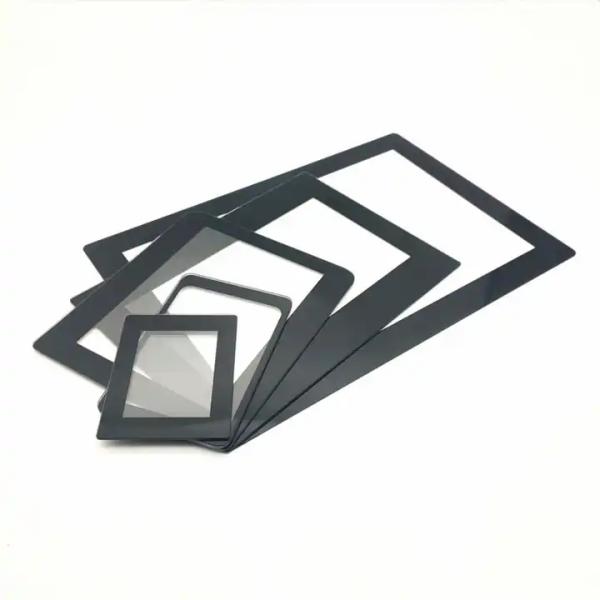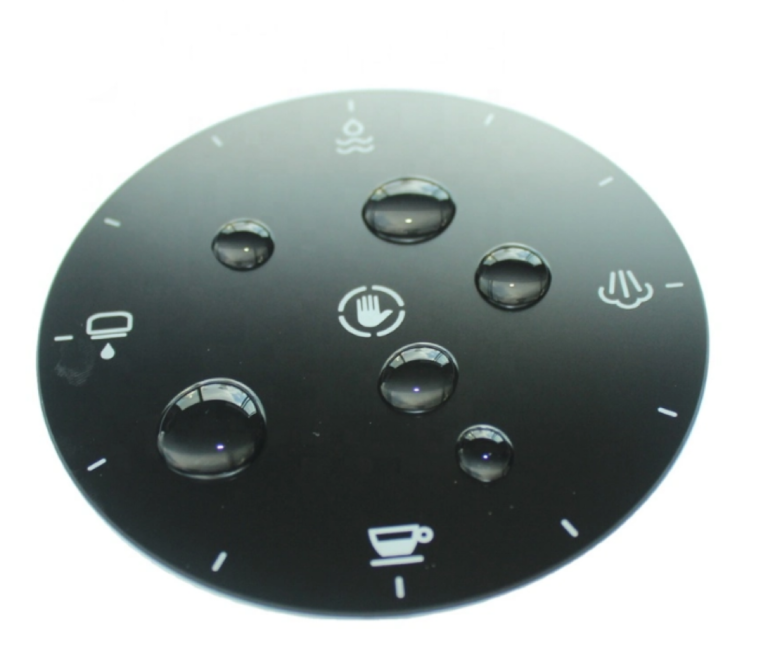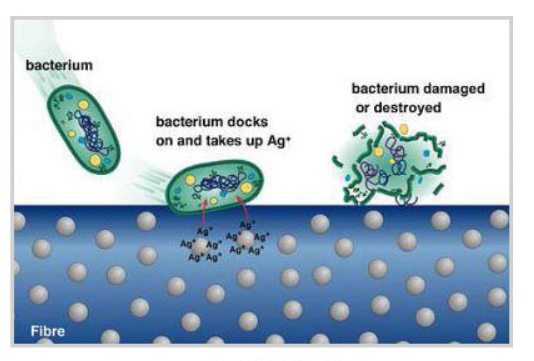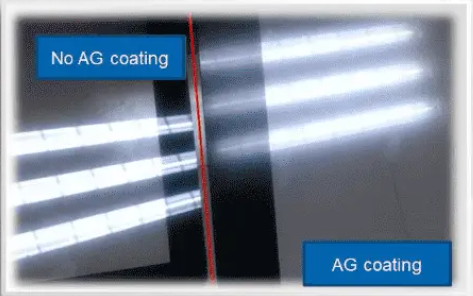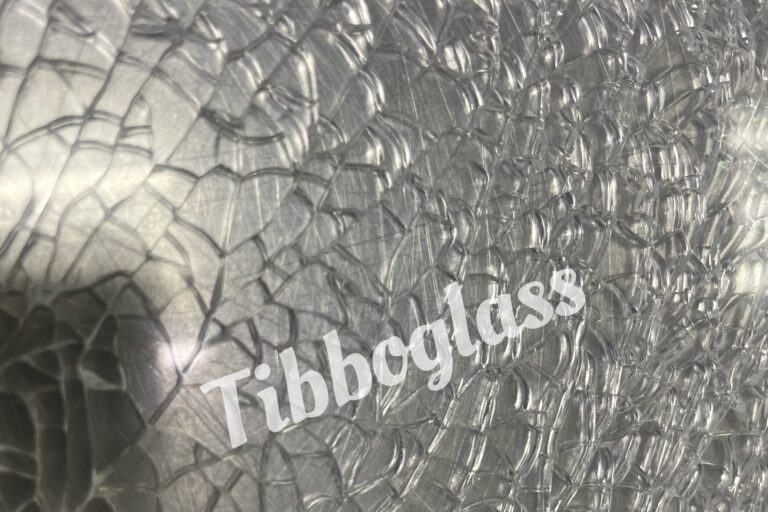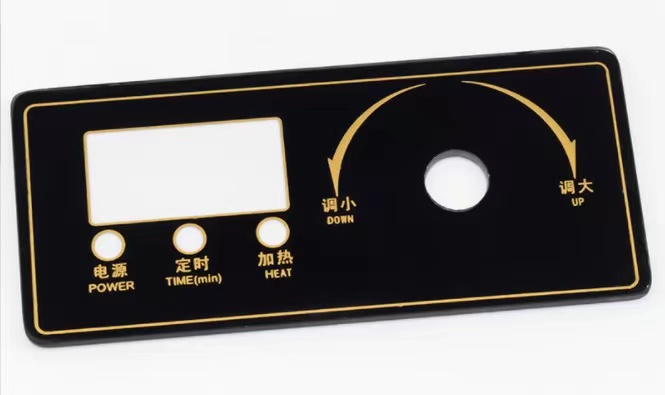
Today ,we are supposed to introduce some frequently asked questions about printing on glass , which can be listed as below 5 aspects:

1. Paste version
Paste, also known as blocking, refers to the phenomenon that the through-hole portion of the screen printing plate cannot transfer ink to the substrate during printing. The occurrence of this phenomenon will affect the printing quality, and in severe cases, normal printing may even be impossible. The reasons for the paste phenomenon produced during the screen printing process are complicated. The reasons for pasting can be analyzed from the following aspects:
① Causes of glass: The glass surface has not been cleaned, and there are still contaminants such as watermarks, paper marks, mimeographs, fingerprints, and dust particles. As a result, the paste is caused;
②The reasons for workshop temperature, humidity and ink properties. The screen printing workshop is required to maintain a certain temperature of about 20°C and a relative humidity of about 50%. If the temperature is high and the relative humidity is low, the volatile solvent in the ink will evaporate quickly, and the viscosity of the ink on the screen will become higher, causing blockage. Live mesh. Another point that should be noted is that if the downtime is too long, the paste phenomenon will also occur. The longer the time, the more serious the paste will be. Secondly, if the ambient temperature is low, the ink fluidity is poor and it is easy to produce a paste;
③ Reasons for the screen printing plate. The prepared screen printing plate must be rinsed with water and dried before use. If the plate is left for too long after being made, it will not be printed in time. Dust will adhere to a greater or lesser extent during the storage process. If it is not cleaned during printing, it will cause paste.
④The reason for printing pressure. Excessive embossing force during the printing process will bend the scraper. The scraper will not be in line contact with the screen printing plate and glass, but will be in surface contact. In this way, the ink can be scraped clean every time, leaving residual ink. , after a certain period of time, the conjunctiva will form a paste.
⑤ Reasons for improper gap between screen printing plate and glass. The gap between the screen printing plate and the glass cannot be too small. If the gap is too small, the screen plate cannot be separated from the glass in time after scraping. When the screen printing plate is lifted, a certain amount of ink will stick to the bottom of the printing plate, which can easily cause smear. plate.
⑥The reason is the ink. When the pigments and other solid particles in the screen printing ink are larger, the mesh holes will easily be blocked. In addition, the selected mesh number and through-hole area are smaller than the particle size of the ink, which makes it difficult for the coarser-grained ink to pass through the mesh and cause the mesh to be blocked. This is also one of the reasons. The paste caused by larger ink particles can be solved when manufacturing the ink. The main method is to strictly control the fineness of the ink.
During the printing process, the viscosity of the ink increases, causing paste. The main reason is that the ink solvent on the screen printing plate evaporates, causing the viscosity of the ink to increase, and the screen blocking phenomenon occurs. If the printing area is relatively large, more ink will be consumed on the screen printing plate, and there will be less smearing. If the image and text area is small and the ink consumption on the screen printing plate is small, it will easily cause the plate to be pasted. The countermeasure is to adopt the principle of adding ink in small amounts and multiple times. The poor fluidity of the ink will cause the ink to smear when it does not pass through the screen. This situation can be solved by reducing the viscosity of the ink and improving the fluidity of the ink without affecting the printing quality. After a plate pasting failure occurs, appropriate solvents can be used to clean the plate according to the nature of the ink on the plate. The key to scrubbing is to start from the printing surface and wipe gently from the center to the periphery. Check the printing plate after wiping. If there is any defect, repair it in time. After repair, printing can be restarted. It should be noted that the plate film becomes thinner every time it is wiped. If the plate film is seriously damaged during wiping, you will have to replace it with a new plate for printing. 2. The ink is not firmly fixed on the glass ① When printing on glass, it is very important to strictly degrease and pre-process the glass before printing. When grease, adhesives, dust and other substances adhere to the surface of the glass, it will cause poor bonding between the ink and the glass.
② The ink itself has insufficient adhesion, causing the ink film to not adhere firmly. It is best to use other types of ink for printing. Improper selection of the diluting solvent will also cause the ink film to be weakly adhered. When selecting the diluting solvent, the properties of the ink should be considered to avoid the phenomenon of weak adhesion between the ink and the substrate.
③Uneven inking and uneven ink film thickness are caused by various reasons. As far as ink is concerned, the ink is poorly blended, or the normally blended ink is mixed into the ink skin. During printing, due to the action of the solvent, the ink expands and softens, and the should be The ink-permeable mesh is blocked and acts as a plate film, preventing ink from passing through. In order to prevent this kind of failure, the prepared ink (especially old ink) should be filtered through a mesh before use. When reusing a used printing plate, the old ink attached to the plate frame must be completely removed. When storing the printing plate after printing, wash it thoroughly (including the scraper). If the tip of the front end of the ink return plate is damaged, marks will appear along the movement direction of the scraper. When printing glass, obvious uneven inking will occur. Therefore, the front end of the scraper must be well protected from damage. If it is damaged, it must be ground carefully with a grinder. Furthermore, the unevenness of the printing table will also affect the uniformity of inking. The ink layer is thin in the convex parts and thick in the concave parts. This phenomenon is also called uneven inking. In addition, if there is dust on the back of the substrate or the printing table, the above failure will also occur.
2. Pinhole phenomenon
The pinhole phenomenon is the most troublesome problem for workers engaged in glass screen printing. There are also many reasons why pinholes occur, many of which are currently unexplainable, and some are quality management issues. Pinholes are one of the most important inspection items in printing product inspection. ①Dust and foreign matter attached to the plate. During plate making, some sol will be mixed in during water washing and development. In addition, when the emulsion is applied, dust is also mixed in, which adheres to the screen and causes pinholes. If these are inspected carefully during the test, they can be discovered and repaired in time. If dust and foreign matter adhere to the screen, blocking the opening of the screen will also cause pinholes. Before formal printing, the screen plate must be carefully checked to eliminate dirt on the plate; ② Cleaning of the glass surface. Before printing, the glass plate should be pre-treated to make its surface clean, and then printed immediately. If the glass is not printed immediately after treatment, it will be contaminated again. After pre-treatment, dirt such as grease can be removed, and at the same time, dust attached to the surface can also be removed. Pay special attention to the fact that when you move the glass by hand, your fingerprints will also adhere to the printing surface, causing pinholes to form during printing.
3.Bubbles appear
Bubbles sometimes appear on the ink after printing on bubble glass. The main reasons for the bubbles are as follows: ① Poor pre-press treatment of the substrate. Dust, oil stains and other substances are attached to the surface of the substrate; ② Bubbles in the ink. In order to adjust the ink, when solvents and additives are added for stirring, some bubbles will be mixed into the ink. If left alone, the ink with low viscosity will naturally degas, while some inks with high viscosity will not degas naturally. Some of these bubbles are naturally eliminated due to the transfer of ink during printing, while others become larger and larger. In order to remove these bubbles, a defoaming agent must be used. The amount of defoaming agent added to the ink is generally about 0.1 to 1%. If it exceeds the specified amount, it will have a foaming effect. Even if the ink foams after transfer, as long as the humidity of the substrate and the fluidity of the ink are good, the bubbles on the surface of the printing ink film will gradually disappear, and the ink will form a flat printing ink film. If the ink bubbles are not eliminated, the ink film will form a ring-shaped uneven film surface. Generally, when the bubbles in the ink pass through the screen, they will also be degassed due to the action of the screen; ③ Bubbles will also be generated if the printing speed is too fast or the printing speed is uneven. The printing speed should be appropriately reduced to maintain the uniformity of the printing speed. 6. Static electricity fault: The electrostatic current is generally very small, but the potential difference is very large. At the same time, phenomena such as attraction, repulsion, conduction, and discharge can occur. ①Adverse effects on screen printing. When printing the screen, the rubber part and the screen are charged due to the pressure and scraping of the rubber scraper. The screen itself is charged, which will affect normal inking and cause plate blocking failure; the printing material will be sucked by the screen at the moment it is output; ② Methods to prevent static electricity. Methods to prevent the generation of static electricity include: adjusting the ambient temperature and increasing air humidity. The appropriate temperature is generally around 20°C and the relative humidity is around 60%; static electricity can be transmitted in humid air; reduce the screen distance and reduce the printing speed.
4.Expanded printing size
The main reason for the expansion of printing size is that the viscosity of the ink is relatively low and the fluidity is too high; the size expansion of the screen printing plate during production is also the reason for the expansion of printing size. In order to avoid excessive ink fluidity causing the ink to overflow to all directions after printing, causing the printing size to become larger, consider increasing the ink viscosity to reduce the ink fluidity. When making screen printing plates, it is necessary to strictly ensure the quality of the screen printing plates and ensure the tension of the screen printing plates. 8. Ink leakage from the printing plate. Part of the plate film leaks ink, which is called ink leakage failure. The reasons are: part of the scraper is damaged; the pressure of the scraper is high; the gap between the plate and the glass is too large; the plate frame deforms greatly and partially Insufficient printing pressure: uneven ink; too thin screen; too fast printing speed, etc. If dust is mixed on the glass and in the ink and is printed without treatment, the plate film will be damaged due to the pressure of the squeegee; pinholes caused by insufficient exposure during plate making will cause ink to leak from the plate film. At this time, tape or other tape can be used to affix it from the back of the plate for emergency treatment. If this operation is not performed very quickly, the ink on the plate will dry out and the entire plate will have to be wiped with solvent. Wiping the plate is also a cause of plate film peeling, so it is best avoided. Ink leakage of the plate often occurs in the part where the ink stays, so it is best to strengthen this part when making the plate.
5. Spots appear in the graphic and dark areas
Moisture refers to the appearance of spotty marks on the graphic and dark parts of the glass surface. This phenomenon damages the printing effect. Glass screen printing is easy to produce this phenomenon. The reasons are as follows: the printing speed and the drying of the ink are too slow; the ink layer is too thin; the ink is thixotropic; the influence of static electricity; the pigments in the ink are poorly dispersed. Due to the polarity of the pigment particles, the particles agglomerate with each other and appear color. Dot blot. The improvement methods are: improve the fluidity of the ink; use quick-drying flux; print with ink with high viscosity as much as possible: increase the wet film thickness of the ink, try to use ink made of pigments with small oil absorption: try to reduce the impact of static electricity . 10. During image deformation printing, the printing pressure applied by the scraper to the printing plate only needs to be able to make linear contact between the printing plate and the object to be printed. Do not exceed this. If the printing pressure is too large and the printing plate contacts the inside of the substrate, the screen will expand and contract, causing the printed image to deform. Screen printing is the smallest printing pressure among all printing methods. If we forget this, we will not be able to produce good prints. If printing cannot be performed without increasing the pressure, the gap between the layout and the glass surface should be narrowed so that the pressure on the scraper can be reduced.
Conclusion
At present, printing on glass technology is transforming into a processing field with high technology content and high technology added value. Products including the previously mentioned touch screens, liquid crystal substrates, solar photovoltaic substrates and other products have gradually become an integral part of the current field of electronic information products. I believe that as time goes by, printing on glass technology will provide more support for the glass industry and even various fields such as electronics, construction, and energy.
Send inquiry to us : https://tibboglass.com/contact-us/
Tibbo Instragm : https://instagram.com/tibboglass?igshid=OGQ5ZDc2ODk2ZA==
Tibbo Facebook: https://www.facebook.com/profile.phpid=61550780595281&mibextid=LQQJ4d

